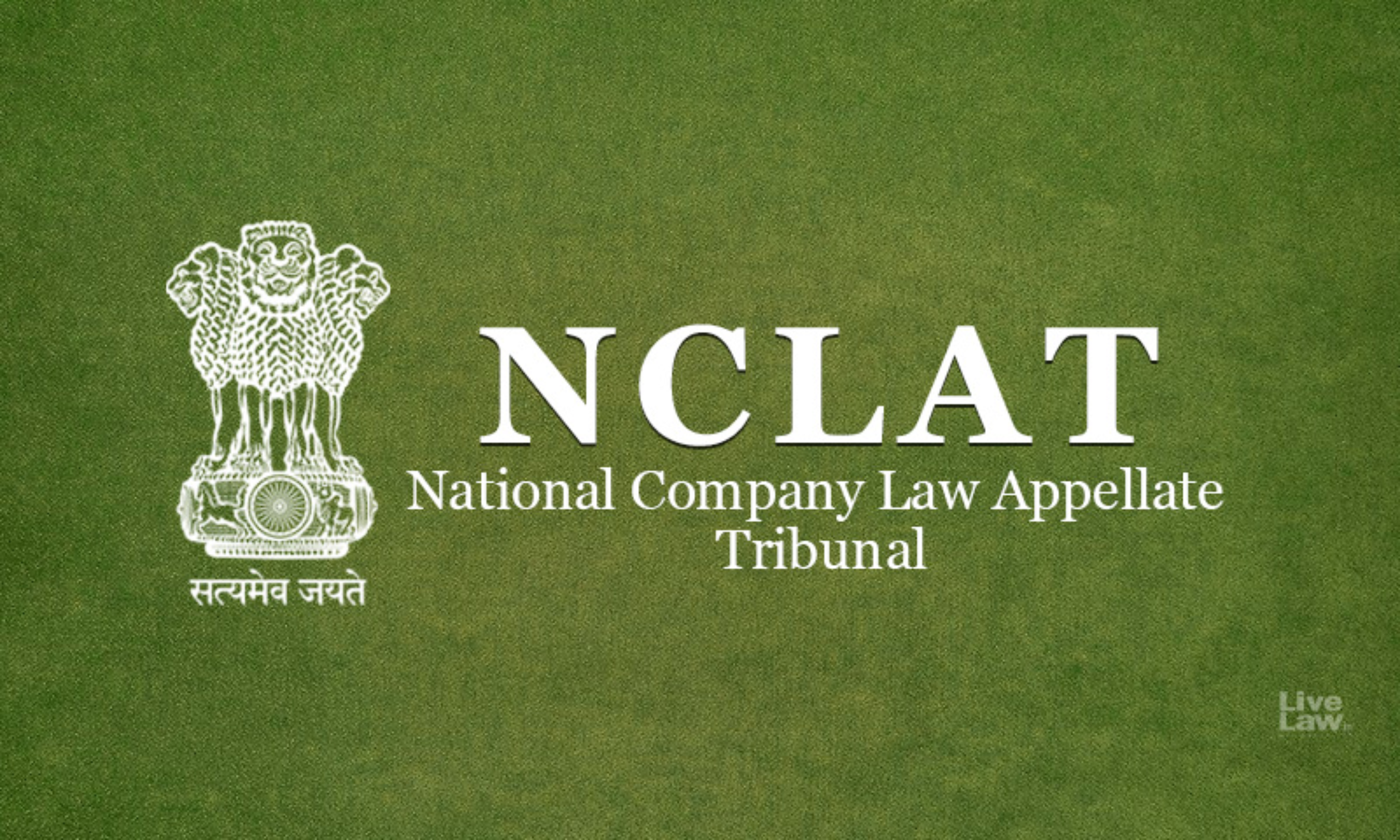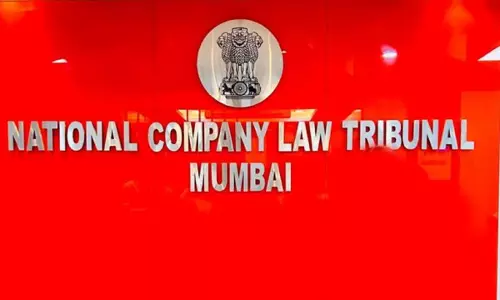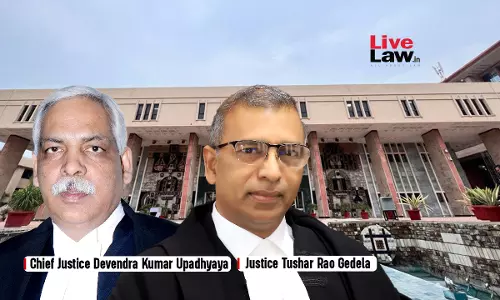Exploring The Priority Of Consideration For Insolvency Applications U/S 7 Of IBC Over Arbitration Applications U/S 8 Of Arbitration Act

In a recent decision titled Century Aluminium Company Limited v. Religare Finvest Limited (2024), the NCLAT grappled with an important question whether, when an insolvency petition under section 7 of the IBC is filed and yet to be admitted, subsequent filing of an arbitration application under section 8 of the Arbitration Act would be maintainable or not. The tribunal observed that when...
In a recent decision titled Century Aluminium Company Limited v. Religare Finvest Limited (2024), the NCLAT grappled with an important question whether, when an insolvency petition under section 7 of the IBC is filed and yet to be admitted, subsequent filing of an arbitration application under section 8 of the Arbitration Act would be maintainable or not.
The tribunal observed that when the insolvency petition is filed and admitted or yet to be admitted, pendency or subsequent filing of the arbitration application is immaterial. The insolvency petition has to be decided first. The tribunal further observed that purpose of the IBC would be defeated if the insolvency petition is postponed just because a corresponding arbitration matter is pending.
In this article, we unpack the development of law on this point with the help of statutory provisions and courts' interpretation.
- Introduction
The IBC was brought in to streamline the insolvency mechanism in India. It provides a robust procedure for resolving the insolvencies of the corporate entities. When a corporate entity defaults in paying the debt, an insolvency petition under sections 7, 8 or 9 of the IBC can be filed. Once this petition is admitted, the moratorium under section 14 of the IBC comes into operation which halts all the proceedings against the corporate until the CIRP concludes. Although, this mechanism has been beneficial for the corporate debtor, it has created complications in the arbitration landscape The Supreme Court in the case of A. Ayyasamy v. A. Paramasivam (2016) has held that insolvency matters are non-arbitrable thereby further reinforcing the centralised nature of the IBC vis-à-vis decentralised nature of the arbitration.
- Commencement of CIRP
As noted already noted above, insolvency petition can be filed either by a financial creditor, operational creditor or corporate debtor under sections 7, 8 or 10 of the IBC respectively. When the insolvency petition is filed by the financial creditor, the Adjudicating Authority has to be satisfied to the fact that the debt exists and the default has occurred. Once these requirements are fulfilled, the petition is admitted. The test for admitting or rejecting the petition was laid down by the Supreme Court in Innoventive Industries Limited vs. ICICI Bank and Another (2018) wherein the court, after referring to the provisions of the IBC held that
“The moment the adjudicating authority is satisfied that a default has occurred, the application must be admitted unless it is incomplete, in which case it may give notice to the applicant to rectify the defect within 7 days of receipt of a notice from the adjudicating authority. Under subsection (7), the adjudicating authority shall then communicate the order passed to the financial creditor and corporate debtor within 7 days of admission or rejection of such application, as the case may be.”
From the above observation, it becomes crystal clear that only requirements of the debt and default need to be satisfied before a petition under section 7 of the IBC can be admitted.
Once the petition is admitted, moratorium under section 14 comes into operation which stops all the proceedings initiated against the corporate debtor. Thereafter, entire procedure as outlined under the IBC is followed.
- Exploring the Primacy of Insolvency Petitions Over Arbitration Matters
What if an insolvency petition is filed under section 7 and at the same time a petition under section 8 of the Arbitration Act is also moved seeking the matter to be referred to Arbitration. In such a scenario, the issue arises as to whether primacy is to be given to the insolvency petition or the arbitration petition. This question came for consideration before the Supreme Court in Indus Biotech Private Limited v. Kotak India Venture (Offshore) Fund (formerly Kotak India Venture Limited) & Ors (2021) wherein the court unpacked this issue in detail.
The court in the above case firstly, discussed the nature of the insolvency matters and referred to its own judgment in Vidya Drolia and Others Vs. Durga Trading Corporation (2021) wherein it was held that:
“Applying the above principles to determine non-arbitrability, it is apparent that insolvency or intra company disputes have to be addressed by a centralised forum, be the court or a special forum, which would be more efficient and has complete jurisdiction to efficaciously and fully dispose of the entire matter. They are also actions in rem.”
From the above observations of the court, one major law point that culls out is that actions in rem cannot be resolved through arbitration and insolvency matters being actions in rem therefore, are also not-arbitrable.
Now, the next issue which needs to be examined as to whether pre admission section 7 stage can be considered an action in rem for it to be outside the clutches of the arbitration.
The court addressed this issue and observed that there is no doubt to the proposition that once an insolvency petition is admitted, it becomes an action in rem therefore arbitration petition would then not be maintainable. However, the matter cannot be said to have become an action in rem when it is at pre admission section 7 stage. If the arbitration petition is filed at this stage, contentions therein can be considered for arriving at a conclusion as to whether requirements of debt and default are fully satisfied.
- Consequences Of Section 7 IBC Admission On Corresponding Arbitration Claims
The court further elaborated that just because the requirement of the existence of the debt is satisfied, it does not mean that the existence of default is automatically to be presumed. The court referred to the relevant para of the Innoventive Industries (supra) wherein it was held as under:
“It is at the stage of Section 7(5), where the Adjudicating Authority is to be satisfied that default has occurred, that the corporate debtor is entitled to point out that a default has not occurred in the sense that the 'debt', which may also include a disputed claim, is not due. A debt may not be due if it is not payable in law or in fact.”
Based on the above observations, the court held that when an arbitration petition is filed at the stage of consideration of a petition under section 7, contentions in the arbitration petition can be considered to ascertain whether a default has indeed occurred. The corporate debtor is entitled to bring evidence so that it could be shown that the default has not occurred. The contentions in the arbitration petition can be considered for arriving at this conclusion.
The court in Indus Biotech Private Limited (supra) held that:
“In a situation where the petition under Section 7 of IB Code is yet to be admitted and, in such proceedings, if an application under Section 8 of the 1996 Act is filed, adjudicating authority is duty-bound to first decide the application under Section 7 of the IB Code by recording a satisfaction with regard to there being default or not, even if the application under Section 8 of the 1996 Act is kept along for consideration. In such event, the natural consequence of the consideration made therein on Section 7 of IB Code application would befall on the application under Section 8 of the 1996 Act.”
From the above observations, the Supreme Court has settled the debate with respect to the fate of application under 8 of the Arbitration Act. Determination of the petition under section 7 of the IBC must be prioritised. Whether an application under section 8 is filed either before or after the insolvency petition, is inconsequential. The remedy provided under section 7 is distinct which is aimed at advancing the main objective of the IBC- effective resolution of financial distress. Thus, adjudication of the petition under section 7 cannot be postponed or dependent upon the result of pending arbitration proceedings. Instead, outcome of the section 7 petition will be decide as to whether the arbitration application should be proceeded with or rejected.
The upshot of the above discussion is that once a petition under section 7 is filed, the Adjudicating Authority must proceed to record its satisfaction as to the existence of debt and default on the basis of evidence adduced by both parties. The power of the Adjudicating Authority to either accept or reject the petition cannot be curtailed on the ground that an arbitration application is already pending or is filed after the insolvency petition is instituted.
- Way Forward
The courts have time and again come across cases where, despite having a dispute resolution clause in the agreement, the financial creditors have resorted to the insolvency resolution by exercising their right under section 7 of the IBC. This leads to the overriding of the dispute clause. It has been reiterated by the courts that the insolvency mechanism should not be used as a debt recovery tool, but no guidelines have been laid down for the Adjudicating Authority to assess whether a particular insolvency petition has been filed with an ulterior motive just to push the corporate debtor into the CIRP. Avoidance of dispute resolution clause by filing the insolvency petition might be one of the ulterior motives so that the corporate debtor could be pressurised to arrive at a settlement.
The dressed up petition test could be a potent tool to filter the genuine insolvency petitions from bogus ones. It would help the authorities determine whether the petition is filed genuinely to seek the insolvency or just to bypass the agreed dispute resolution mechanism. This test would also ensure that matters having a dispute resolution clause are referred to arbitration, as agreed in the contract, instead of prematurely dragging the corporate debtor into the insolvency.
The Supreme Court in the case of Innoventive Industries (supra has limited the scope of enquiry to checking the existence of default at pre admission section 7 stage. A roving enquiry to check the veracity of the petition at this stage cannot be conducted by the authority. If the requirements of debt and default are satisfied, petition under section 7 has to be admitted. Thereafter, this ruling was diluted by the Supreme Court in the case of Vidharbha Industries (Supra) wherein the court held that solvent companies cannot be pushed into insolvency even if the prerequisites of debt and default are satisfied. It was held that the authority may refuse to admit the petition if it comes to the conclusion that the entity defaulted temporarily. After some time in the case of M. Suresh Kumar Reddy v. Canara Bank (2018) , the SC comprising the same judges who doned the Vidharbha bench observed that the latter was confined to its unique facts and was not in contradiction to the the test laid down by the court in the Innoventive Industries (supra. This ruling made it clear that the ruling in the Vidharbha case still holds the field.




![IBC Weekly Round-Up [7th April-13th April 2025] IBC Weekly Round-Up [7th April-13th April 2025]](https://www.livelaw.in/h-upload/2024/08/01/500x300_552807-weekly-digest-of-ibc-cases.webp)